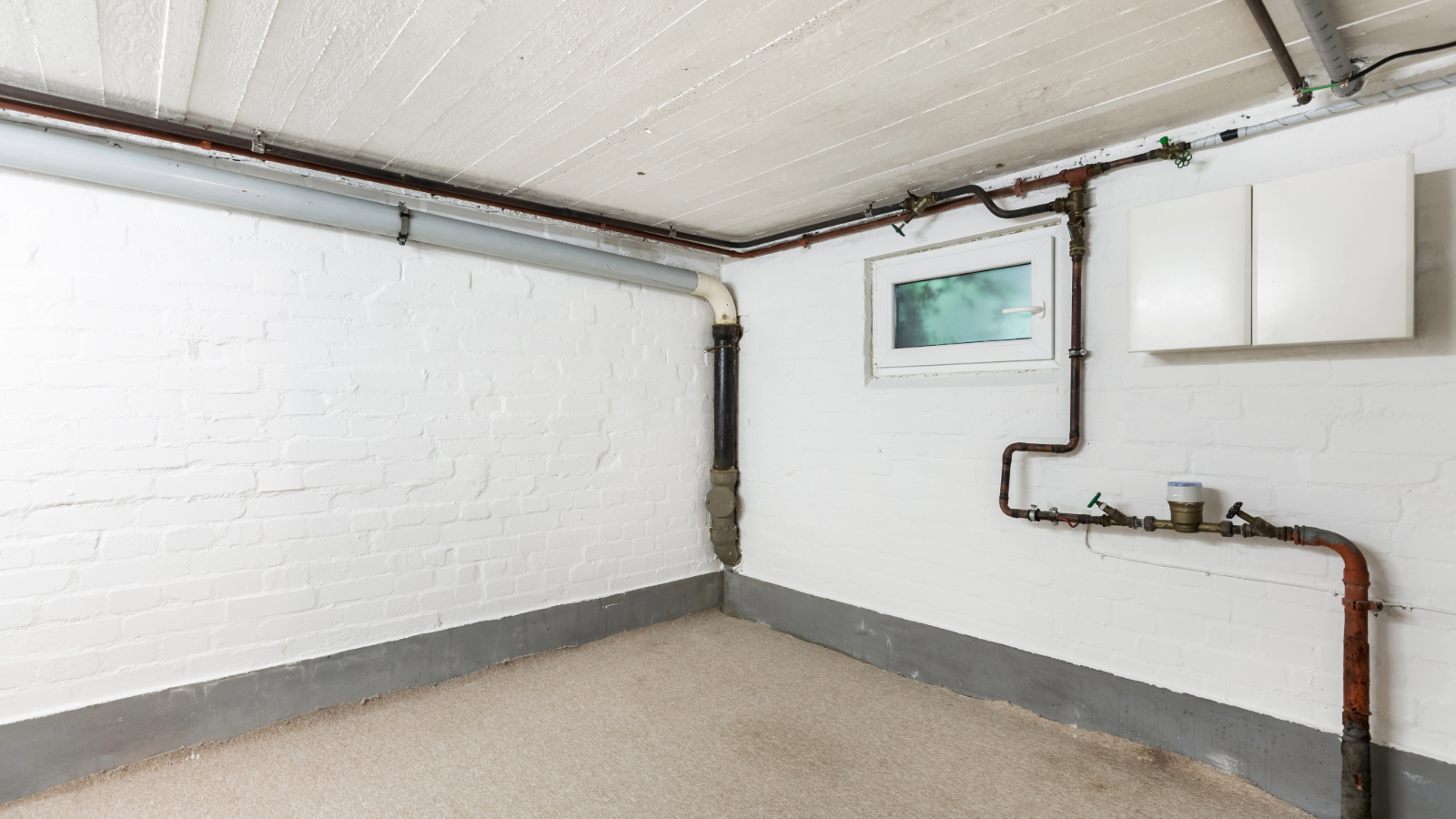Lighting a kitchen island: Bright ideas on how to do it well
Understanding the ins and outs of lighting a kitchen island is key to ensuring that this kitchen staple not only looks beautiful but performs brilliantly too — we explain how it's done
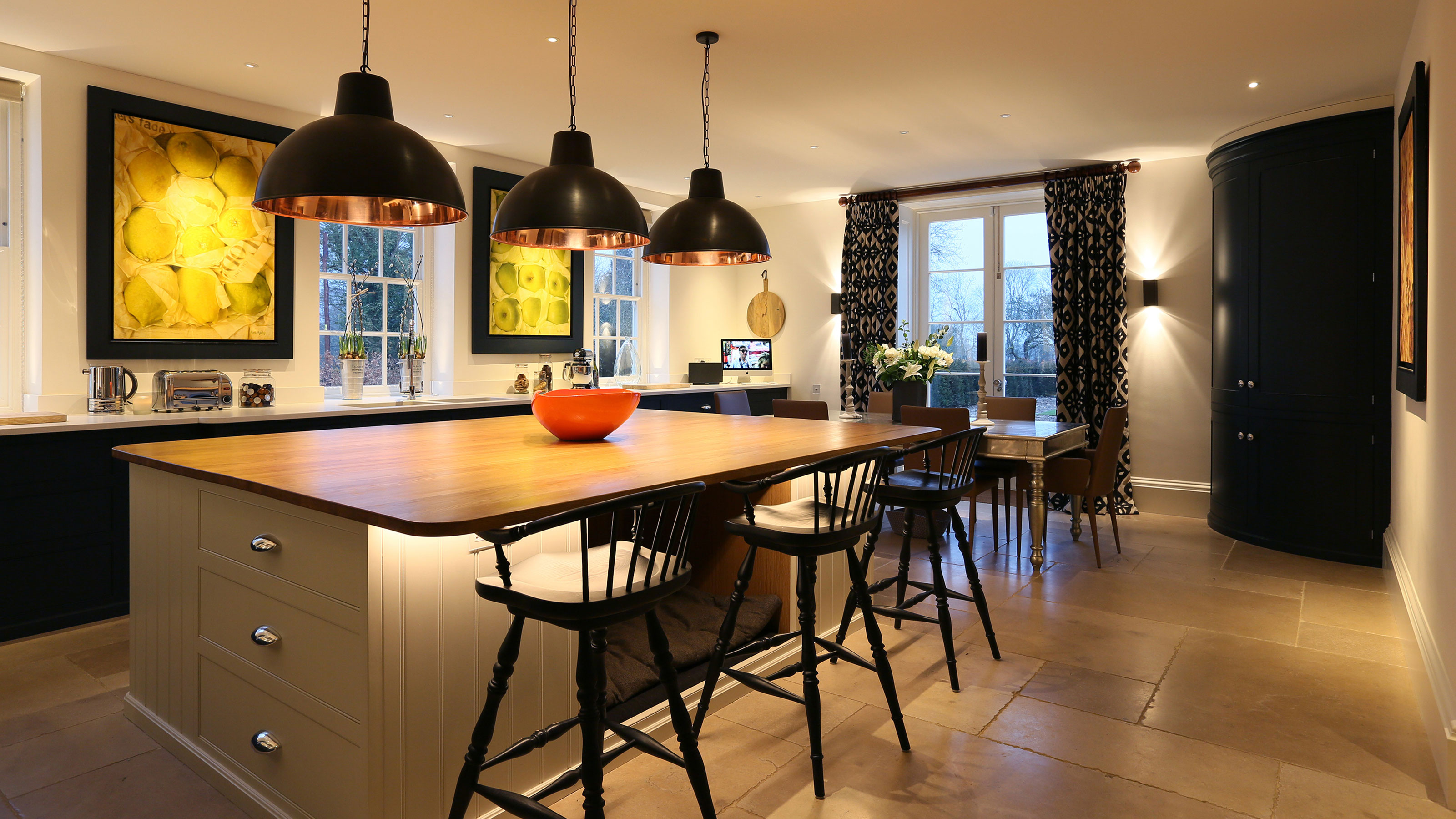
Lighting a kitchen island well will not only ensure that it is shown off in all its glory whatever time of day, but it also means that you will be able to make the very most of it on a practical level.
Kitchen island ideas seem to be ever-evolving right now, with this being a feature that is more popular than ever. From dainty, compact islands that add a handy workstation spot in small kitchens, to impressive, sprawling designs that form the centrepiece in larger kitchens of all styles — there really is a kitchen island out there for all requirements and homes.
However, just as important as the design of your kitchen island and the appliances and equipment that you kit it out with it is how it is lit. With the wrong lighting even the most beautiful and well-planned island can fail to deliver.
Here, we explain how to use different light sources and fittings to bring your kitchen island to life and ensure that it is suitable for however you plan on using it, be that as a practical cooking station or a sociable spot around which to gather with family and friends — or both.
Design and practical considerations when lighting a kitchen island
Before coming up with a lighting design scheme for your kitchen island you really need to spend some time thinking about what you want to use it for — leaving out nothing.
When designing a kitchen island think about whether you want it to double up as a dining table or just want to use it as somewhere you will carry out the day-to-day practicalities such as cooking, washing up and food preparation. Perhaps you want to use your island as a socialising area which also acts as a divide between your kitchen and dining spaces. Some people also want their kitchen island to perform as a work space.
Once you have a crystal clear idea of how you will be using the space you are far better equipped to start thinking about how best to light it — in the majority of cases, people will want to use their kitchen island for a number of daily tasks and this is where using different layers of light will really help ensure it can be the multi-tasking feature you need.
Bring your dream home to life with expert advice, how to guides and design inspiration. Sign up for our newsletter and get two free tickets to a Homebuilding & Renovating Show near you.
What's more, installing a kitchen island is usually a job undertaken at the same time as renovating, remodelling or fitting a kitchen. As such, it is really important that you keep everyone in the loop when it comes to your plans for how you want to light the space.
Forgetting to mention that you want hidden LEDs beneath your worktops, uplighters set into the floor at the base of your island or an oversized chandelier over the worktops could cause disruption and extra costs later down the line.
Make sure your electrician, kitchen fitter and kitchen supplier all know exactly which light fittings you are opting for.
Here are our top tips for introducing light – natural as well as artificial – to your kitchen island.
1. Combine task, ambient and accent lighting
Just as with any lighting design scheme, it is always best to think in terms of 'layers' when it comes to illuminating your kitchen island. Very often these are features that are used in lots of different ways at various times in the day and as such it is likely that you will need different light sources to reflect these uses.
The three main types of light to think about are task, ambient and accent lighting. Combining all three in the lighting design for your island is a great way to ensure you get maximum enjoyment and use out of it.
Ambient lighting is also known as background lighting and is usually provided through a selection of recessed downlights in kitchens. That said, wall lights and pendant lights can also be used to provide this type of lighting.
Task lighting is really important over kitchen islands as it is the practical type of lighting you will need to carry out everyday jobs, such as cooking and food prep. Spotlights, strategically positioned pendants and downlights can all perform this function, as can kitchen extractors with built-in lighting.
Finally, accent lighting (sometimes called mood lighting) is a great way to add a little atmosphere to the room and to highlight the shapes and any features you particularly love on your island — concealed LED strip lights and uplighters at the base of your island are good examples.
Aim to use all three to light your island up. Your ambient lighting may well be all you need in the daytime, your task lighting will make fiddly jobs a cinch, and your accent lighting will get everyone cosily gathered around the space as the sun sets.
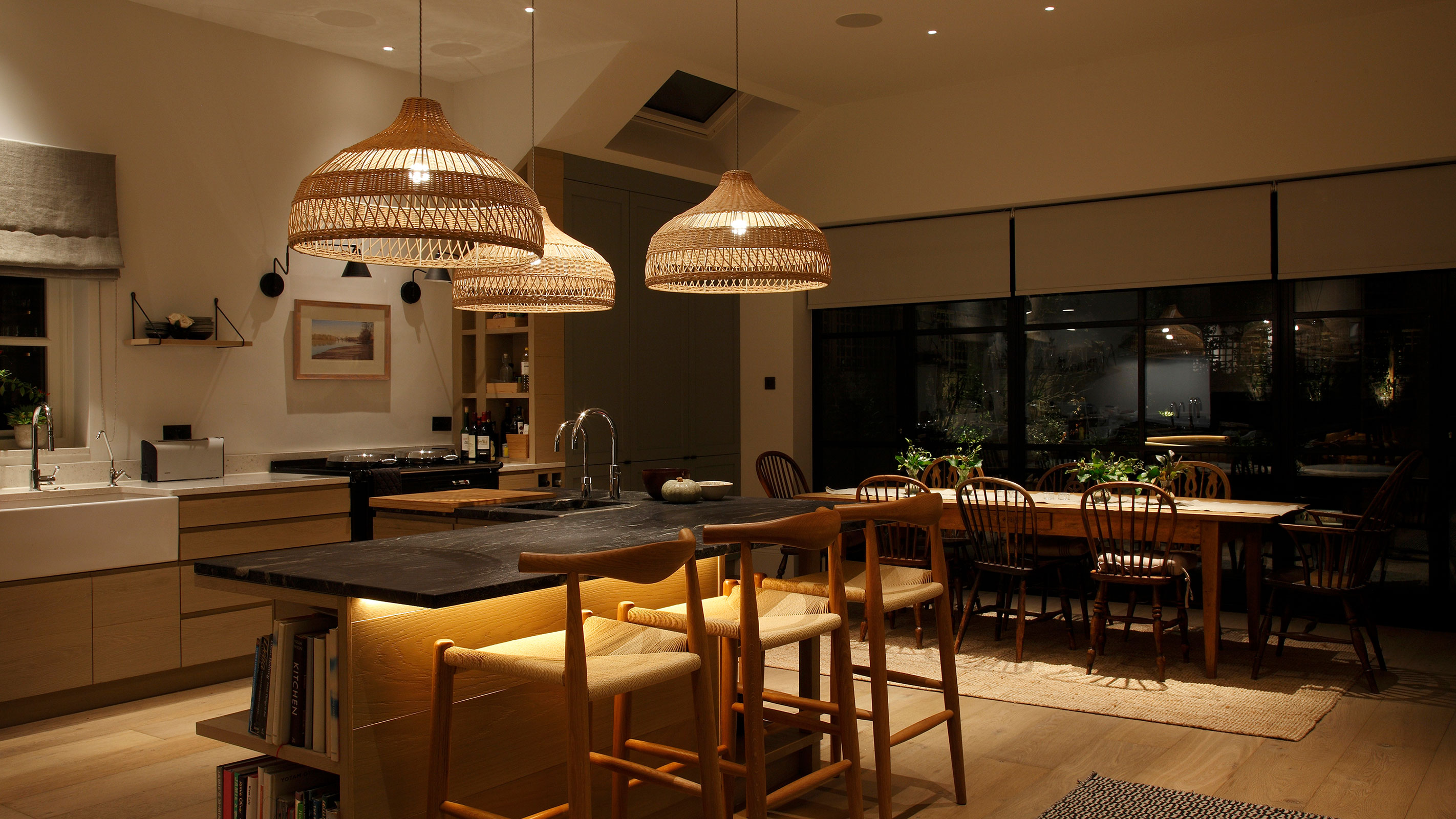
2. Use pendant lights to add personality
Pendant lights are one of the most effective and popular of all kitchen lighting ideas and come in an enormous range of sizes, styles and colours to suit absolutely any kind of kitchen.
“Pendant lighting works best above the kitchen island, not only because it gives the opportunity to add a sense of personality to the space, but also because it creates a distinct lighting zone that can feel more intimate," says Al Bruce, founder of Olive & Barr.
"If you’re looking for something that won’t date as interior trends come and go, keep it simple with a row of clear glass or white pendants. Those looking for a bolder statement should consider large industrial-style pendants that will add depth to the space as well as a contemporary contrast to kitchen cabinets.”
Most kitchen and lighting experts agree that pendants over islands are a great way to express your personality and bring the feature into focus.
"Use decorative pendants to add visual focus and draw attention to the area," says Estefania Marquez, design associate at John Cullen Lighting "These can be replaced as your style evolves and do not have to be high output."
“When it comes to lighting your kitchen island, it is an area where you can be playful and make a statement — after all, you want to shine a light on your kitchen and in particular your island," says Richard Davonport, managing director at Davonport.
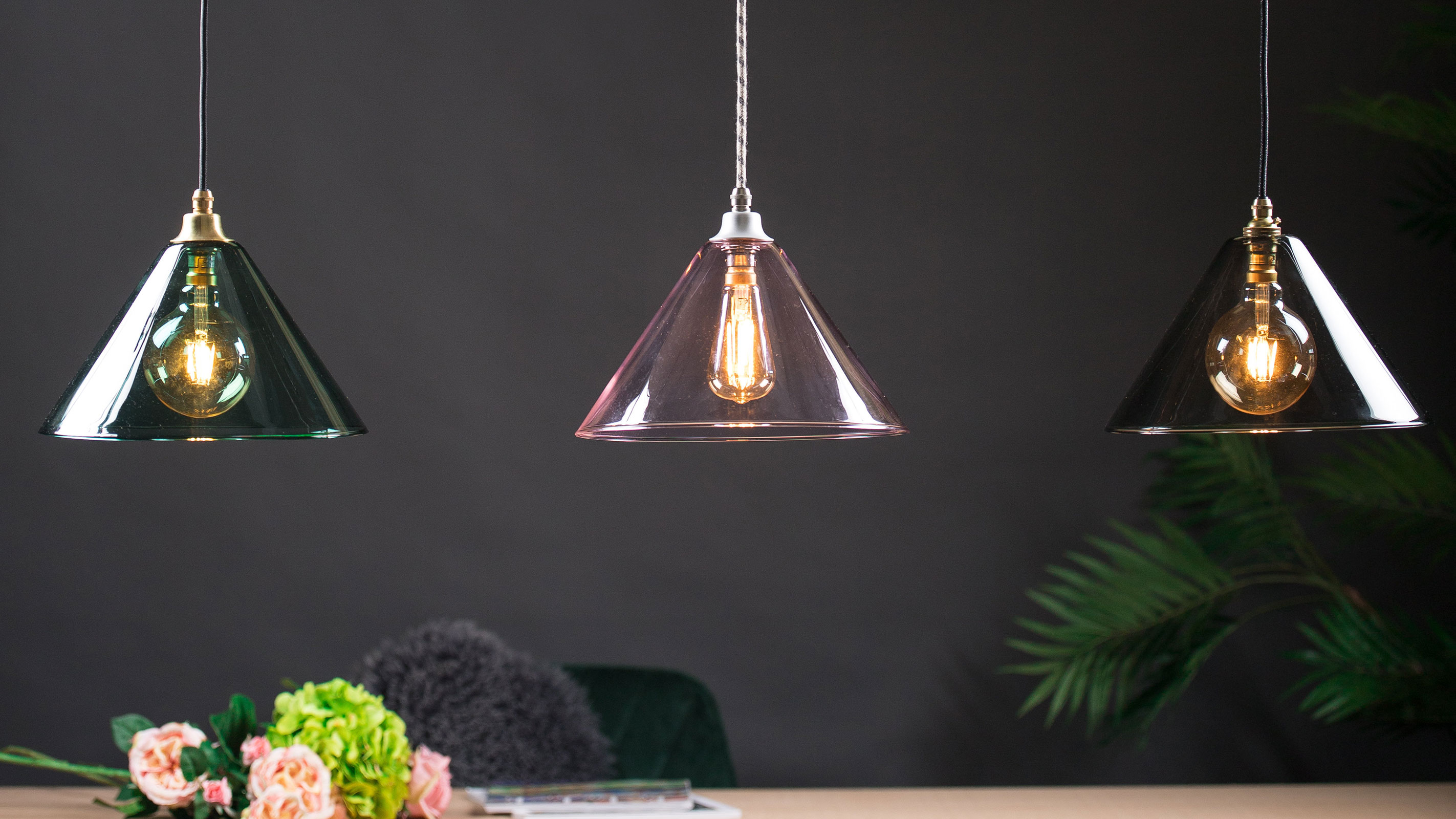
3. Bump up task lighting with directional downlights
While pendant lights are amongst the best kitchen island lighting ideas, it is usually a good idea to use them in conjunction with another form of task lighting — directional downlights are a great idea here.
"Most pendants will not provide the ideal task light over a kitchen island, so it is best to pair your pendants with low glare recessed downlights," says Estefania Marquez. "They can ensure glare is kept to a minimum whilst providing sufficient task light in a discreet manner. This will also be ideal if you are not using pendants and want to achieve a cleaner look."

4. Tweak the mood with low level lighting
When designing a kitchen island it is best to view it as a multi-functional feature. Yes you want it to provide an important practical role but this is your opportunity to create a spot around which to come together at certain times to make plans, chat about the day and so on.
The lights you use over and around your kitchen island can really help here — the soft glow of certain light sources can instantly soothe and relax.
"Think about also introducing drama and atmosphere with low level lighting," suggests Estefania Marquez. "This adds softness and mood in the winter afternoons and evenings. Pre-planning and liaising with the kitchen designer is required to achieve a seamless integration."
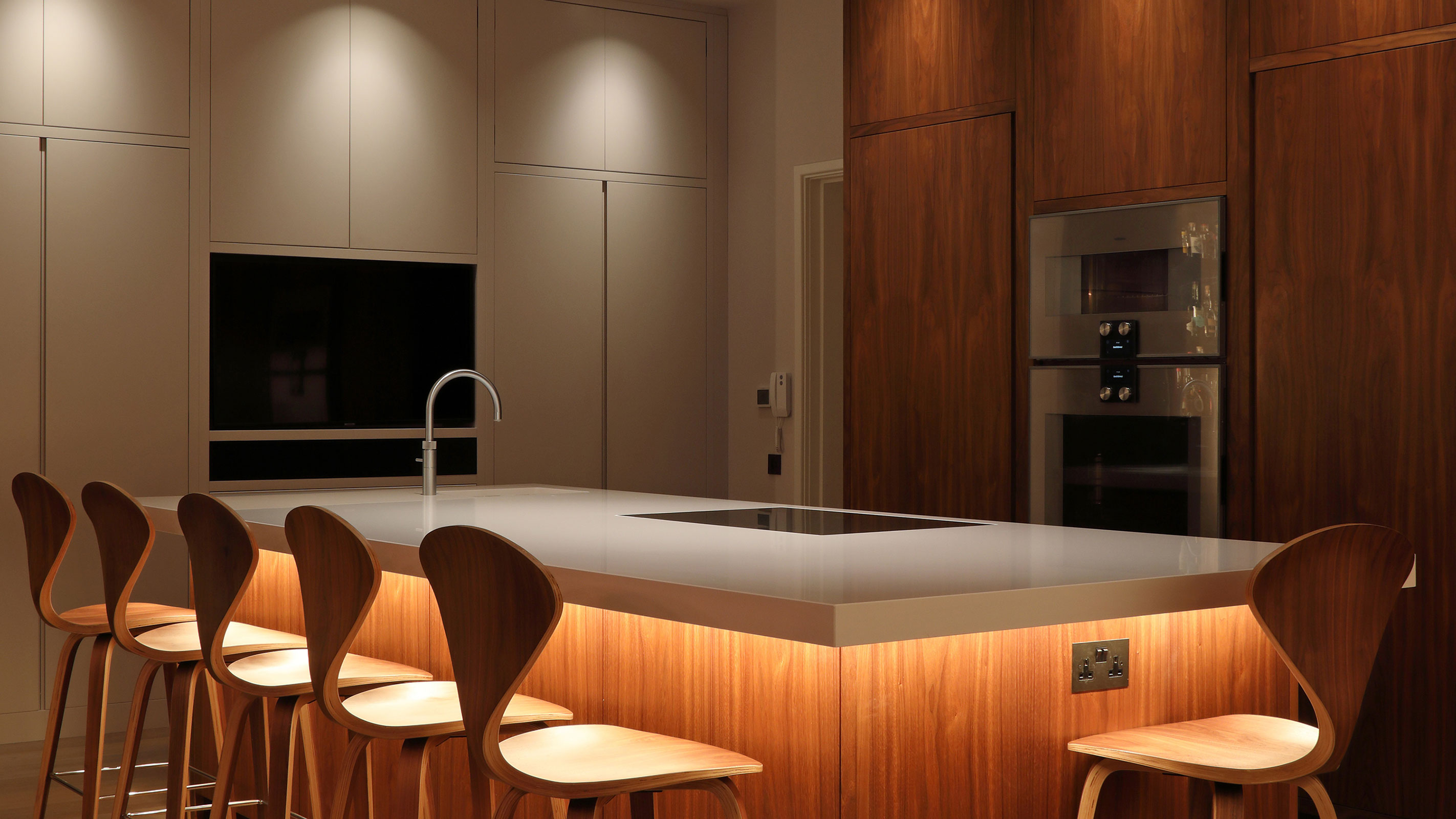
5. Don't forget to introduce overhead natural lighting
Never underestimate the impact natural light can have on how a space performs and feels.
When positioning your kitchen island, think about sources of natural light, such as windows and sliding or bifold doors. Take time to consider how light will fall on the island at different times of the day — you don't, for example, want to be trying to make lunch squinting into the midday sun.
In the case of kitchen extensions, incorporating a roof lantern over your kitchen island or a bank or rooflights is a fantastic way to bring natural light streaming down onto your worksurface.
Recessing downlights around the perimeter of the roof lantern will mean your lighting needs are dealt with as daylight fades.
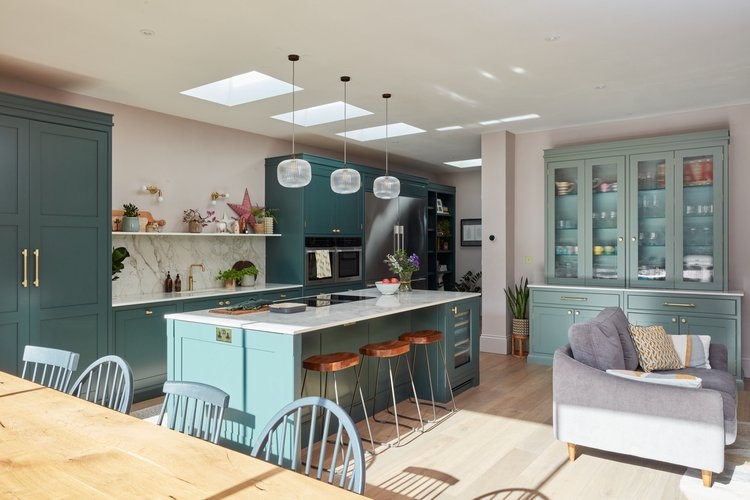
6. Be brave with a chandelier or pendants
A kitchen island is a big investment, both in terms of cost as well as effort and organisation — so make sure the results get the attention they deserve.
Your kitchen island really should become the focal point of the space and so using lighting that really stands out as markedly different to that used elsewhere makes sense.
“We tend to choose different lighting to the rest of the kitchen over the island, which can often be spotlights," says Richard Davonport. "We instead look to choose pendants — and nearly always in groups of three."
"My advice will always be — be bold!" says Melissa Klink, creative director at Harvey Jones. "Pendent lights aren’t forever, you can take them down when you move house, you can sell them on ebay and re-decorate.
"That said, do keep in mind the other material and colour choices you’ve made elsewhere — when you’ve worked so hard you don’t want to lose the coherence at the last hurdle. When you see what you want, buy it! Honestly, it's so hard to find what you want, and you can bet that when you’ve thought about it, it will have sold out or be discontinued."
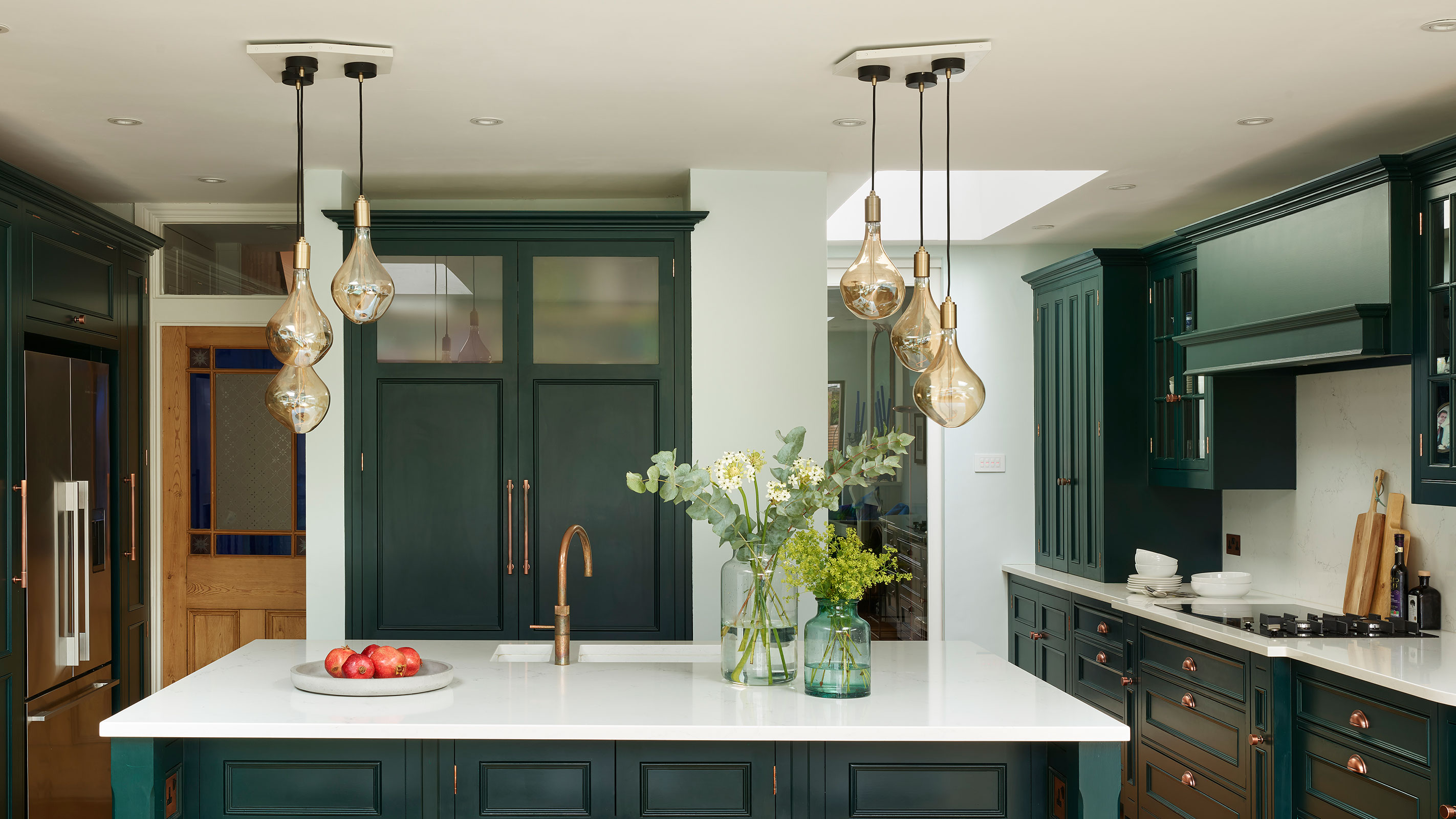
7. Aim to group lights in odd numbers over an island
It really does seem that no self-respecting kitchen island is complete these days without the obligatory pendant lights — but knowing how to position them is key to getting the look spot on.
"There is an unwritten law in interior design that clusters of three nearly always look better than twos or fours, which is why you’ll often see a row of three pendants over a kitchen island," says Richard Davonport.
“It doesn’t have to be three, just odd numbers such as five and seven — but this can often be overkill. The reason odd numbers work is that even numbers are considered formal or even artificial, whereas choosing to go with an odd number of lights can be considered naturalistic."
However, do be wary of conforming to this 'rule'. There will always be exceptions where an even number may just work better.
"You don’t want the pendent lights to look bunched up too close together," says Melissa Klink. "Three is most popular, but two is better than three tightly positioned pendants.”

8. Consider the height of lights carefully
If you are opting for pendant lights or a chandelier over your kitchen island you really need to think through their height.
"You don’t want to knock your lights when you lean over the kitchen island for chopping or serving up," says Melissa Klink.
But what height is right for pendants over a kitchen island? Of course this will very much depend on what you plan on using your island for and where on the island the pendants are suspended above. If, for example, your pendants are clustered over the centre of a large island, the risk of head-hitting is removed. However, on smaller islands where you may be standing to grab breakfast, height is going to be more important.
In general though, experts tend to suggest hanging kitchen island pendants around 750-910mm above the work surfaces. However, this should be tweaked depending on your height, the design of the pendant and how much light it gives out from its base — pendants with wide bases have a broader shed of light so can be hung higher.
You also need to think about whether or not your pendants obstruct your view of the rest of the kitchen or will get in the way of guests seeing each other when standing around the island — or worse still being blinded by eye-level lights.
In truth, the best way to get the height of your lights spot on is to throw away the rule book and, before installing your lights, have someone hold them up until you get the height right.
Finally, if your island will incorporate a hob, avoid hanging any lights at all above this area. You will be better off using a ceiling-mounted extractor with integrated lights or downlights with an IP rating that makes them fit for purpose.
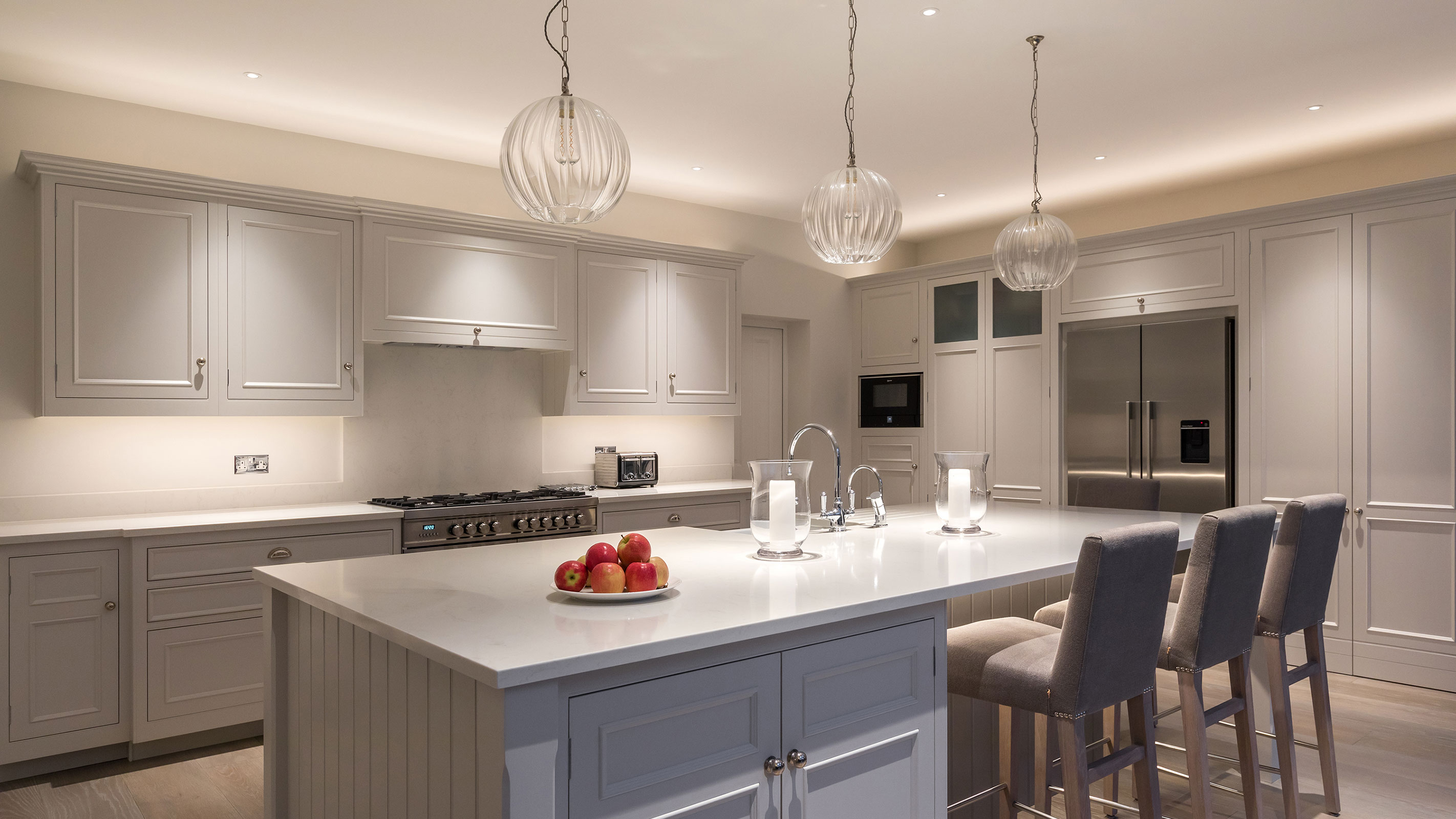
9. Consider giving your island its own circuit
When designing your kitchen lighting scheme, you do need to think in terms of circuits, not just the decorative element.
When it comes to circuits for a kitchen, it is usual to run at least three in the space. One will serve the downlights, another will control the pendant lights and one for any accent or kitchen cabinet lighting ideas you might have included, for example.
However, it can also be useful to have a circuit controlling the lights on your island, to ensure that once the cooking is over, the practical spaces can be visually 'shut down' while the sociable island area continues to offer a warm glow.
Do consider fitting a dimmer switch or use smart lighting to allow you to tweak light levels.
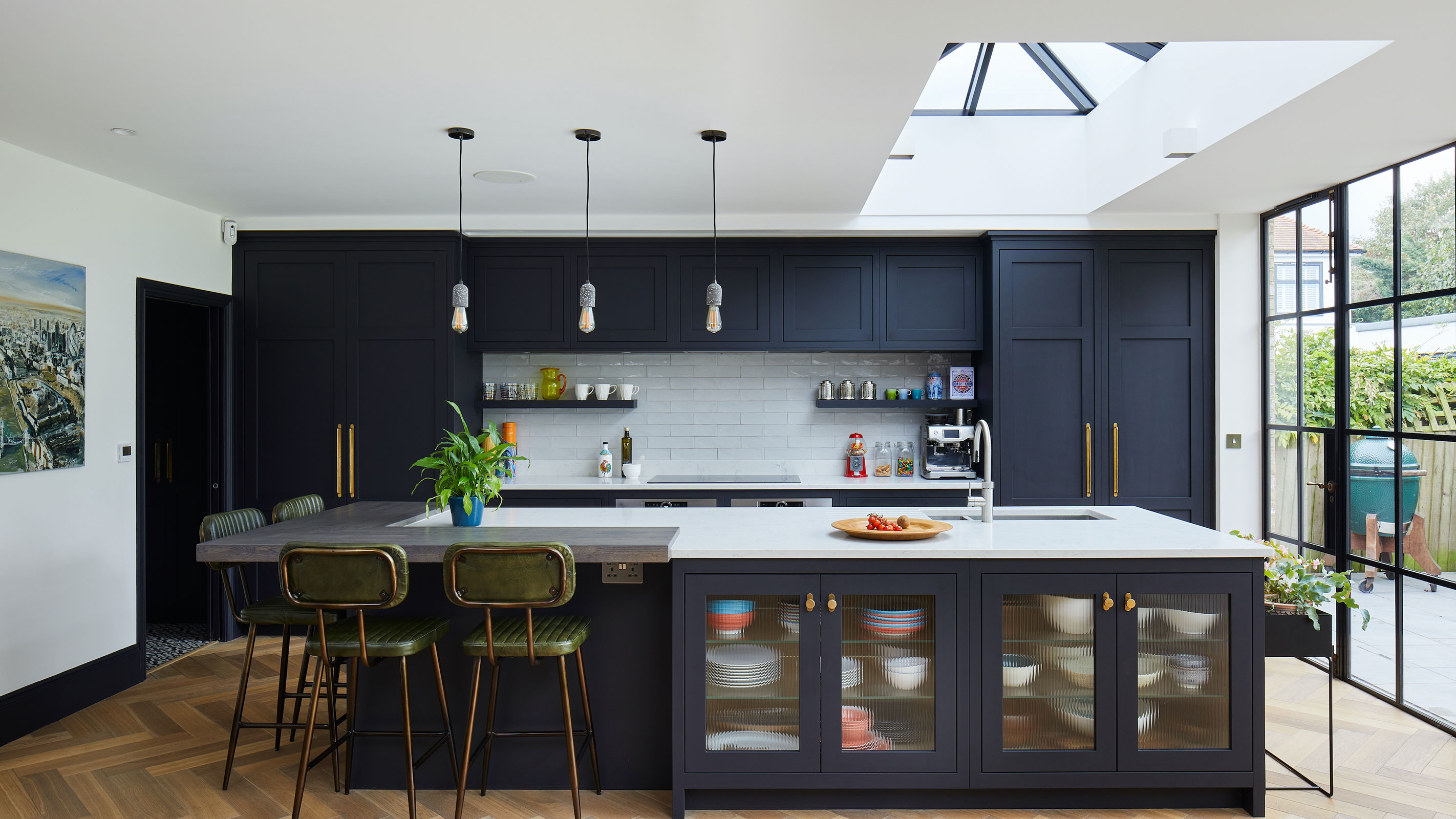
10. Combine your island lighting with extraction
If you are planning on installing a hob within your kitchen island, it really does make a lot of sense to choose one that offers a good source of light over the cooking area too.
There are now lots of kitchen extraction methods that actually look more like designer lights than a practical method of sucking out stale air.
The best kitchen extractor fans should not only be effective at removing smells and steam, but they also need to be quiet when running and tie in with the overall design scheme of the space too.
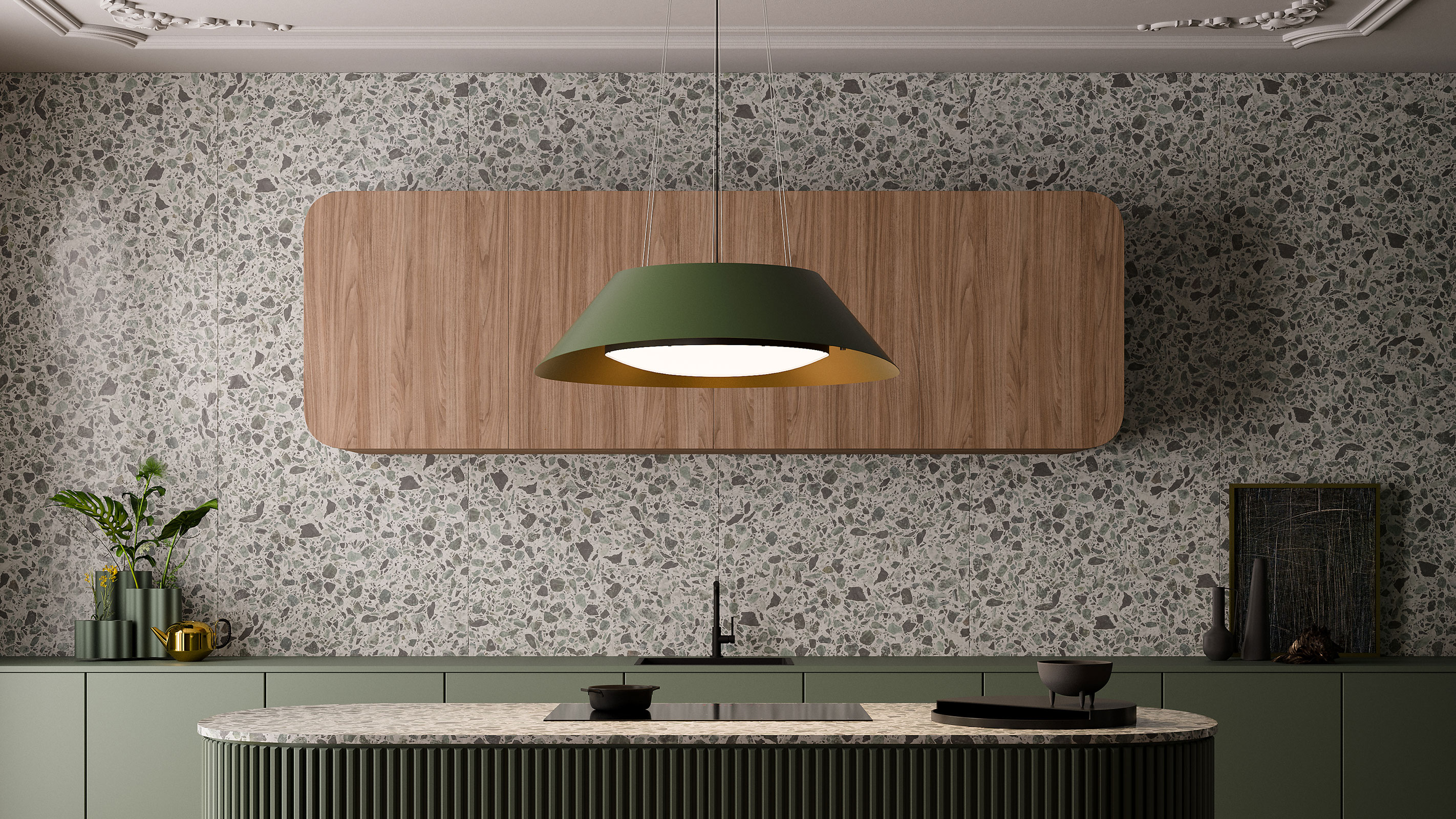
Natasha was Homebuilding & Renovating’s Associate Content Editor and was a member of the Homebuilding team for over two decades. In her role on Homebuilding & Renovating she imparted her knowledge on a wide range of renovation topics, from window condensation to renovating bathrooms, to removing walls and adding an extension. She continues to write for Homebuilding on these topics, and more. An experienced journalist and renovation expert, she also writes for a number of other homes titles, including Homes & Gardens and Ideal Homes. Over the years Natasha has renovated and carried out a side extension to a Victorian terrace. She is currently living in the rural Edwardian cottage she renovated and extended on a largely DIY basis, living on site for the duration of the project.

